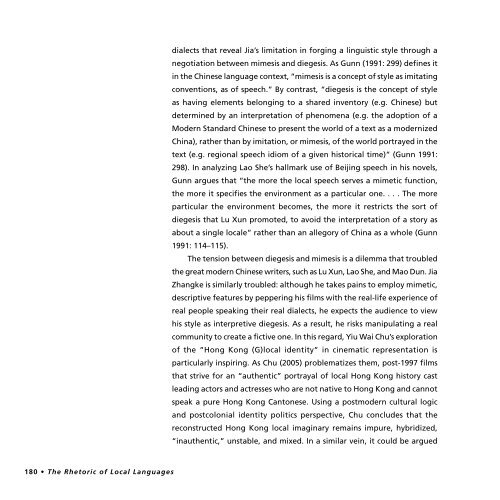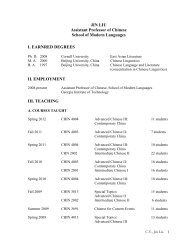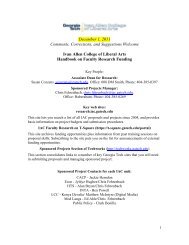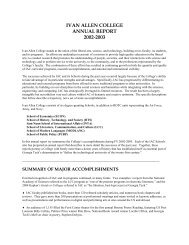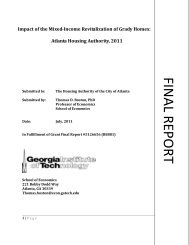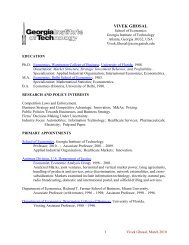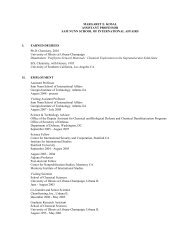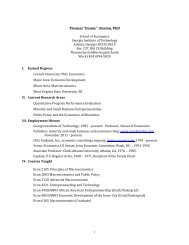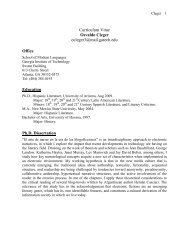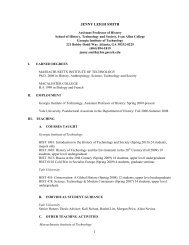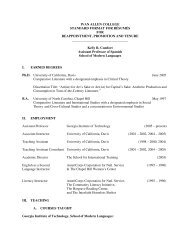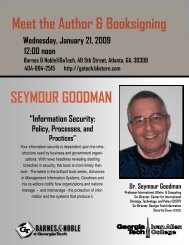Read this paper
Read this paper
Read this paper
Create successful ePaper yourself
Turn your PDF publications into a flip-book with our unique Google optimized e-Paper software.
dialects that reveal Jia’s limitation in forging a linguistic style through a<br />
negotiation between mimesis and diegesis. As Gunn (1991: 299) defines it<br />
in the Chinese language context, “mimesis is a concept of style as imitating<br />
conventions, as of speech.” By contrast, “diegesis is the concept of style<br />
as having elements belonging to a shared inventory (e.g. Chinese) but<br />
determined by an interpretation of phenomena (e.g. the adoption of a<br />
Modern Standard Chinese to present the world of a text as a modernized<br />
China), rather than by imitation, or mimesis, of the world portrayed in the<br />
text (e.g. regional speech idiom of a given historical time)” (Gunn 1991:<br />
298). In analyzing Lao She’s hallmark use of Beijing speech in his novels,<br />
Gunn argues that “the more the local speech serves a mimetic function,<br />
the more it specifies the environment as a particular one. . . . The more<br />
particular the environment becomes, the more it restricts the sort of<br />
diegesis that Lu Xun promoted, to avoid the interpretation of a story as<br />
about a single locale” rather than an allegory of China as a whole (Gunn<br />
1991: 114–115).<br />
The tension between diegesis and mimesis is a dilemma that troubled<br />
the great modern Chinese writers, such as Lu Xun, Lao She, and Mao Dun. Jia<br />
Zhangke is similarly troubled: although he takes pains to employ mimetic,<br />
descriptive features by peppering his films with the real-life experience of<br />
real people speaking their real dialects, he expects the audience to view<br />
his style as interpretive diegesis. As a result, he risks manipulating a real<br />
community to create a fictive one. In <strong>this</strong> regard, Yiu Wai Chu’s exploration<br />
of the “Hong Kong (G)local identity” in cinematic representation is<br />
particularly inspiring. As Chu (2005) problematizes them, post-1997 films<br />
that strive for an “authentic” portrayal of local Hong Kong history cast<br />
leading actors and actresses who are not native to Hong Kong and cannot<br />
speak a pure Hong Kong Cantonese. Using a postmodern cultural logic<br />
and postcolonial identity politics perspective, Chu concludes that the<br />
reconstructed Hong Kong local imaginary remains impure, hybridized,<br />
“inauthentic,” unstable, and mixed. In a similar vein, it could be argued<br />
180 • The Rhetoric of Local Languages<br />
MCLC 18.2.indd 180<br />
12/20/06 2:01:37 PM


